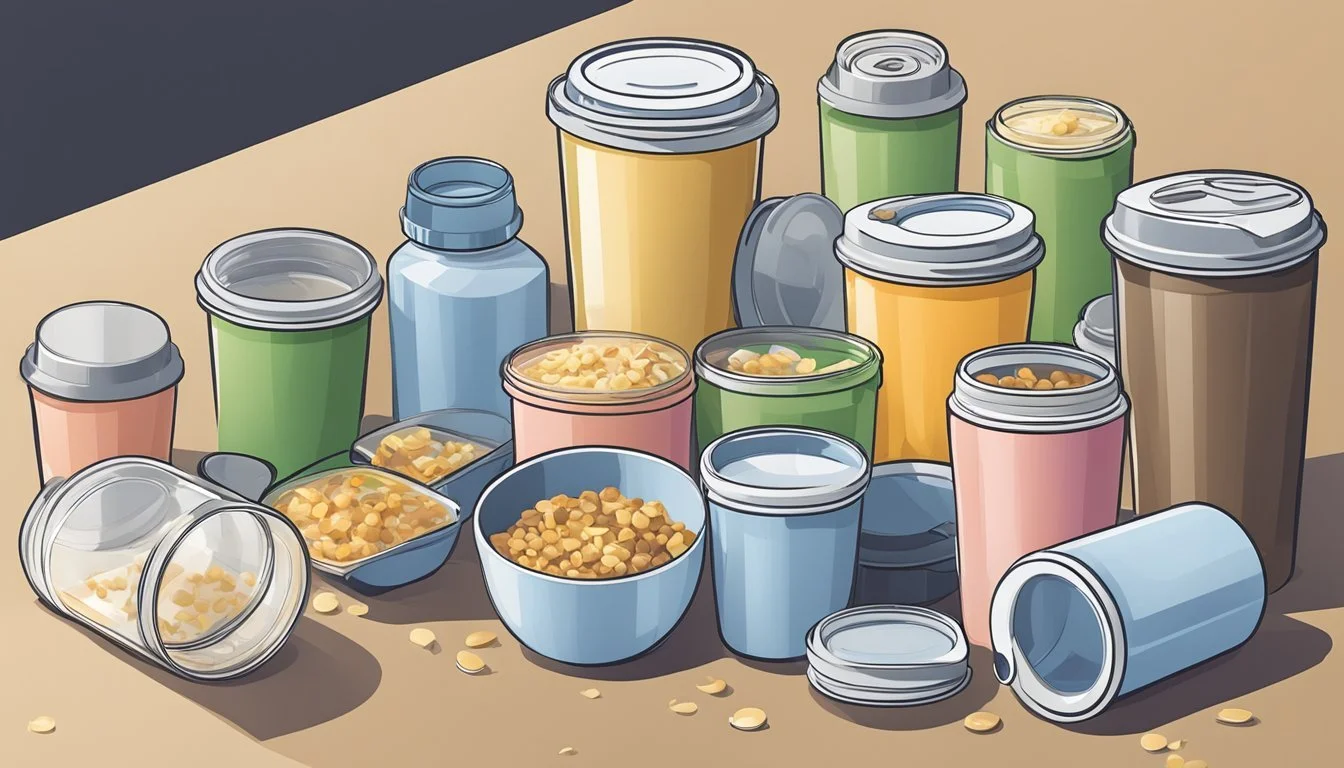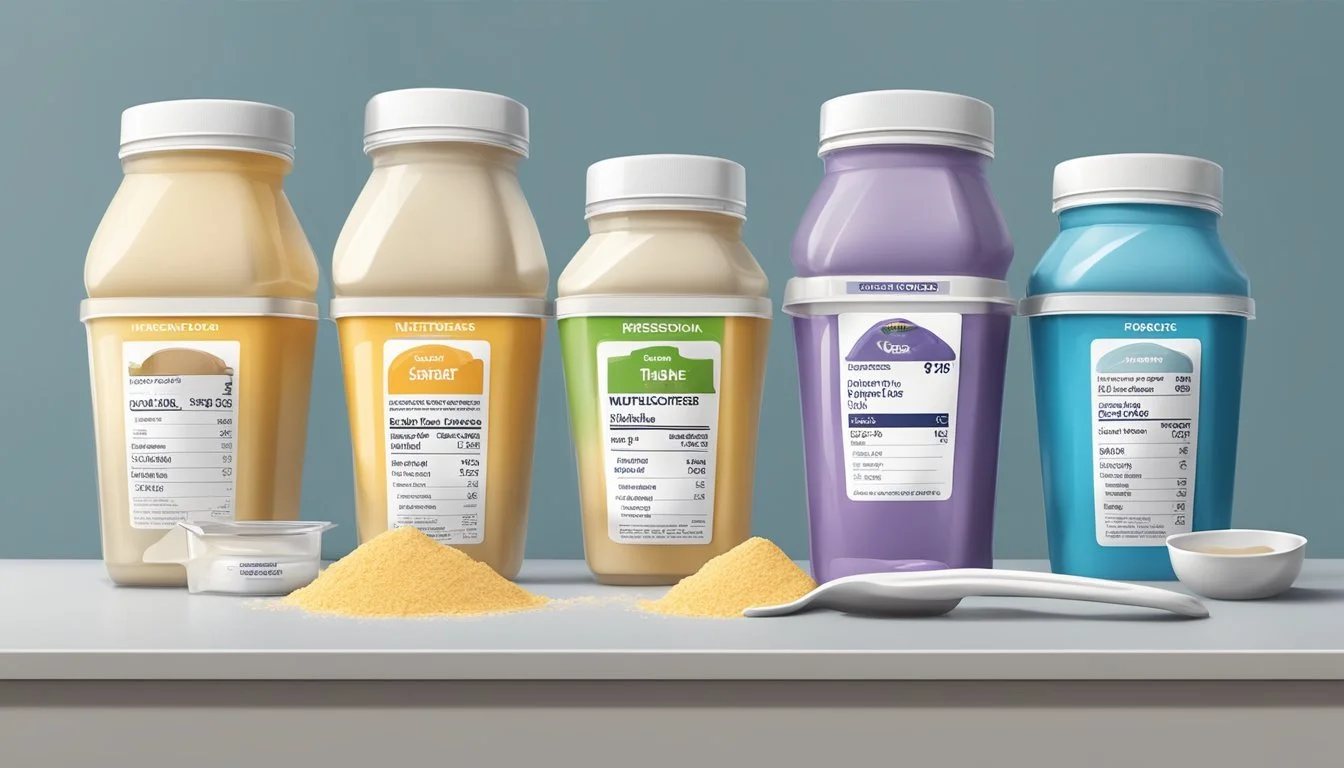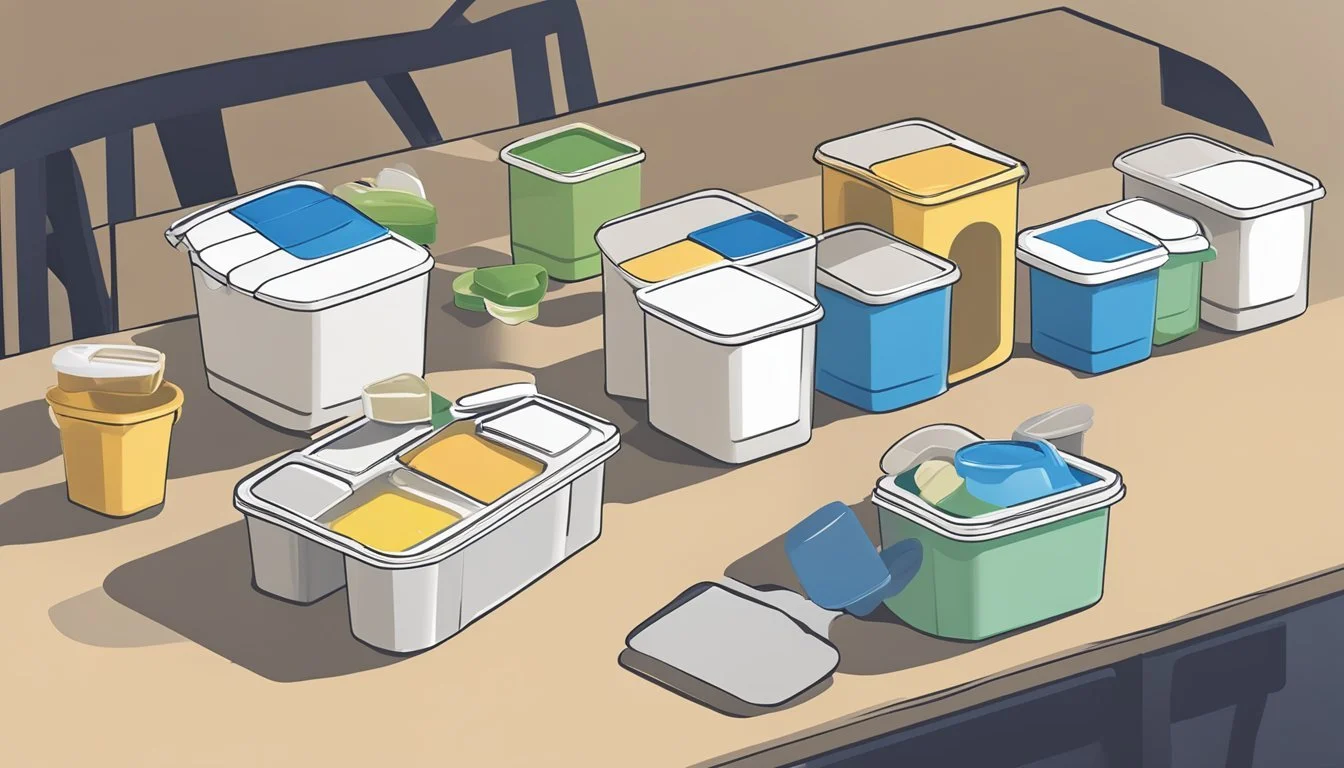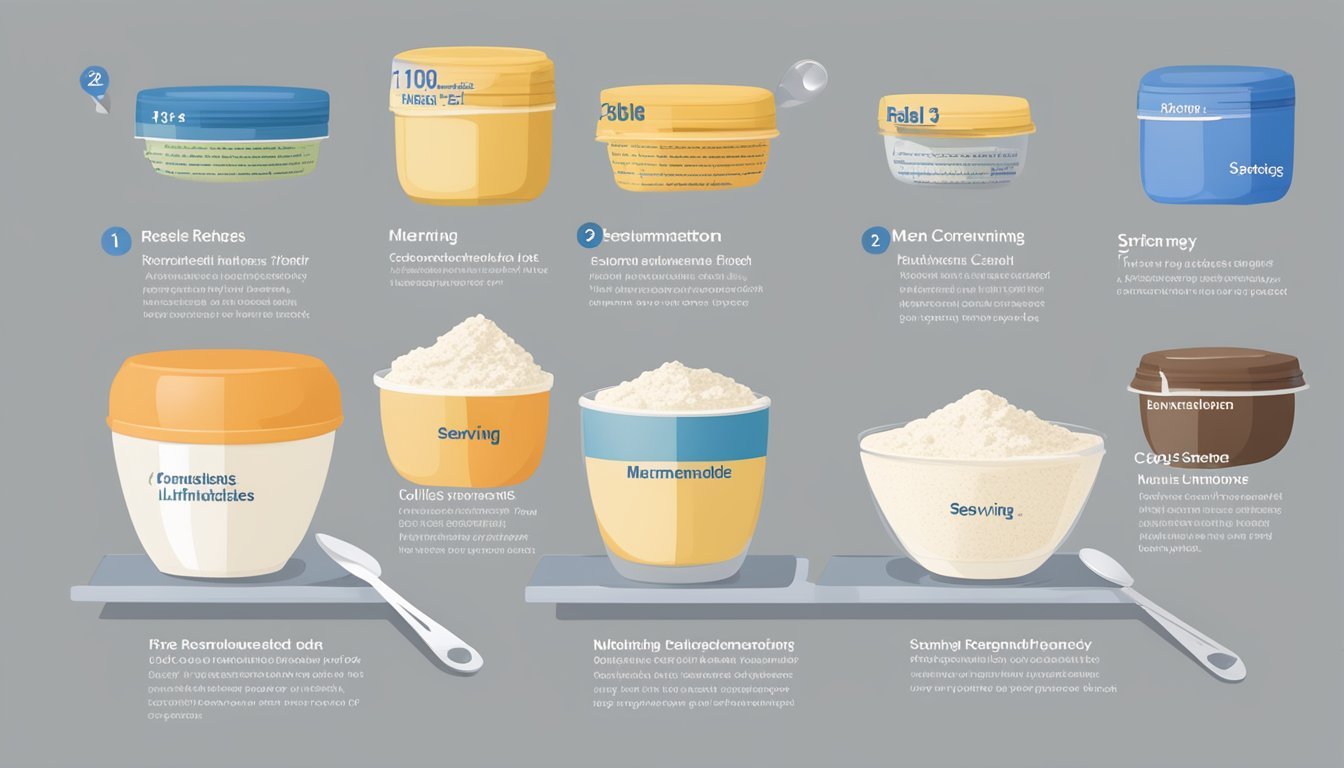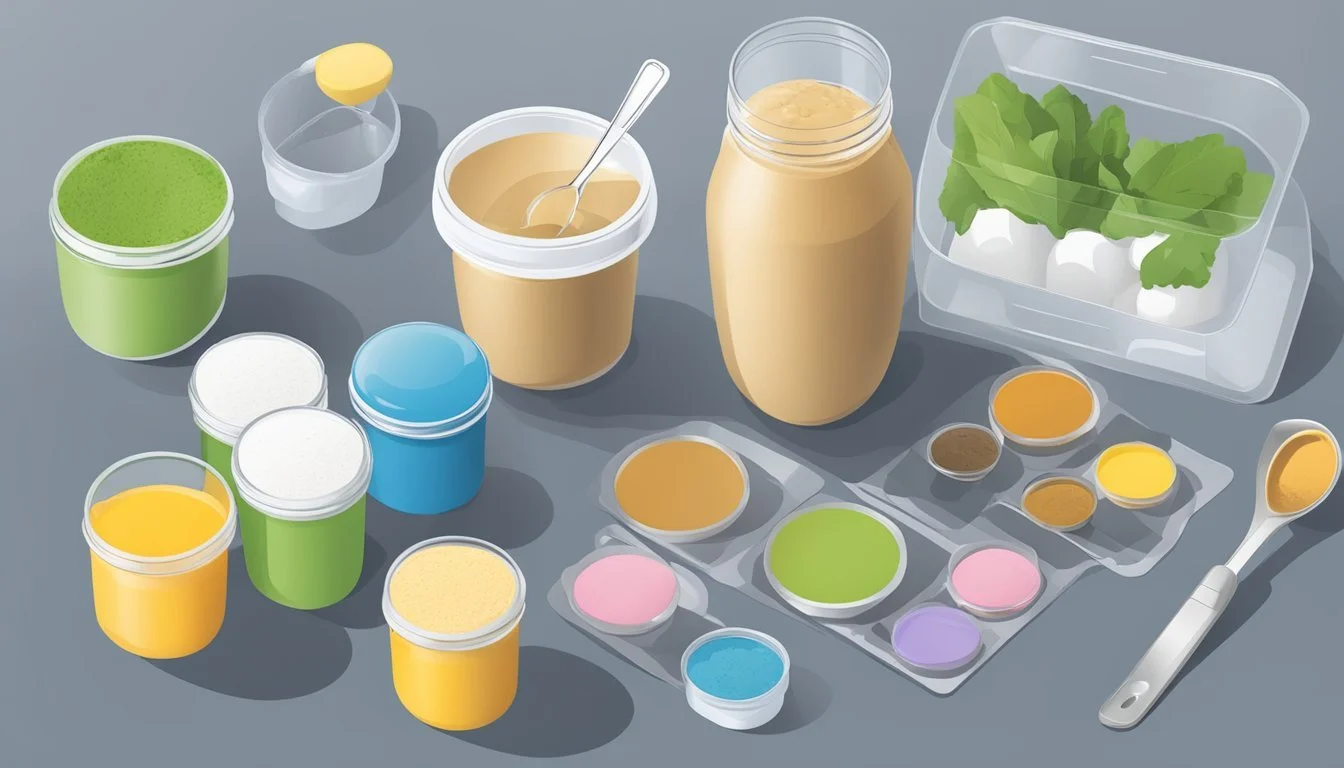How Many Servings of Nutricost Meal Replacement Shake Is Too Much
Expert Guidelines
When considering how many servings of Nutricost meal replacement shake is too much, it's essential to look at the nutritional content and dietary needs. Meal replacement shakes like Nutricost are designed to provide a balanced mix of nutrients in a convenient form, making them an excellent supplement for those with busy lifestyles or specific dietary goals.
Nutricost meal replacement shakes are nutrient-dense with both chocolate and vanilla flavors available, making them versatile for various taste preferences. Each serving is designed to replace a meal, so consuming more than two or three servings per day may exceed the recommended caloric and nutrient intake for most individuals. Regular consumption should be balanced with whole foods to ensure a comprehensive diet.
Consulting a healthcare provider or a nutritionist can offer personalized advice based on your unique dietary needs and health goals. While Nutricost meal replacement shakes can be a valuable part of a weight management or nutritional plan, exceeding three servings per day can lead to an imbalance in your diet. Balancing these shakes with fresh, whole foods helps sustain overall health and well-being.
Understanding Meal Replacement Shakes
Meal replacement shakes serve as convenient alternatives to solid meals, offering a balance of nutrients in a quick, easy-to-consume format. They are often used for weight management or as meal substitutes for busy individuals.
Definition and Purpose
A meal replacement shake is a drink designed to substitute for a solid meal, typically containing a mix of protein, carbohydrates, fats, vitamins, and minerals. These shakes aim to provide a suitable nutritional profile similar to a well-balanced meal.
Meal replacement shakes are convenient for those with tight schedules. They can be a quick breakfast or lunch option when time is limited. They are also useful for weight management, offering portion-controlled nutrients that help maintain satiety.
Comparison to Solid Foods
While meal replacement shakes offer convenience, they differ from solid meals in several ways. Solid foods generally have a more complex composition that can take longer to digest, leading to increased feelings of fullness. The texture and variety of solid foods can also be more satisfying.
However, meal replacement shakes can be an effective solution for those seeking controlled calorie intake or specific nutrient profiles. They often come in flavors like chocolate and vanilla, making them a palatable choice. Non-GMO and gluten-free options are available, catering to various dietary needs.
In essence, while solid foods provide broader nutrient diversity and satiety due to longer digestion times, meal replacement shakes offer quick, nutritionally-balanced alternatives that accommodate busy lifestyles.
Nutritional Content Analysis
Nutricost Meal Replacement Shake offers a blend of macronutrients and micronutrients to support balanced nutrition. Below, we explore the detailed composition focusing on proteins, carbohydrates, fats, vitamins, minerals, added sugar, and artificial ingredients.
Macronutrient Breakdown
Nutricost Meal Replacement Shake provides a balanced profile of macronutrients. Each serving contains 20 grams of protein, supporting muscle maintenance and repair. Carbohydrates contribute around 30% of the 170 calories per serving, offering a good source of energy.
The shake also includes fats, making up another 30% of the caloric intake, aiding in satiety and energy balance. This combination ensures a balanced and fulfilling nutritional profile suitable for meal replacement.
Vitamins and Minerals Content
The shake is fortified with essential vitamins and minerals to ensure comprehensive nutrient coverage. Key vitamins include vitamin A, B-complex vitamins, vitamin C, and vitamin D. These vitamins play roles in energy production, immune support, and bone health.
Minerals such as calcium, magnesium, and iron are also present. These are crucial for bone strength, muscle function, and oxygen transport. The proper balance of vitamins and minerals is vital for overall wellness.
Added Sugar and Artificial Ingredients
Nutricost Meal Replacement Shake aims to limit unnecessary additives. It is Non-GMO, gluten-free, and third-party tested, emphasizing purity and quality.
While some meal replacements are high in added sugars, Nutricost keeps sugar content minimal. This approach helps in maintaining healthy blood sugar levels. Additionally, the product avoids excessive artificial ingredients, reducing the risk of unwanted side effects and promoting cleaner nutrition.
Health Considerations
When using Nutricost Meal Replacement Shakes, several health considerations are important to understand, including aspects related to weight management, dietary restrictions, and muscle recovery.
Weight Management
For individuals focused on weight loss or weight gain, it's crucial to monitor the calorie intake of each serving. Nutricost Meal Replacement Shakes typically range between 250 to 550 calories per serving.
When aiming for weight loss, consuming too many servings can lead to excessive calorie intake, negating weight loss efforts. On the other hand, those looking to gain weight might benefit from multiple servings, but it's essential to ensure this aligns with overall nutritional needs.
Nutrient balance is also key. One must verify that the shakes provide a well-rounded mix of proteins, fats, and carbohydrates to support a healthy diet.
Dietary Restrictions and Allergens
Nutricost Meal Replacement Shakes are designed to cater to various dietary restrictions. They are non-GMO, gluten-free, and undergo third-party testing to ensure quality and safety. However, individuals with specific allergens should review the ingredient list carefully.
Those with lactose intolerance or dairy allergies need to confirm if the product contains any milk derivatives. Similarly, people with soy sensitivities should check for soy-based ingredients.
Ensuring that a meal replacement shake fits personal dietary needs is essential to avoid adverse reactions and maintain a balanced diet.
Role in Muscle Recovery and Growth
For fitness enthusiasts and athletes, meal replacement shakes can play a significant role in muscle recovery and growth. Nutricost shakes include proteins that are vital for muscle repair post-exercise.
Adequate protein intake from these shakes helps in the synthesis of new muscle tissue and can aid in recovery after workouts. Combining the shakes with a regular exercise regimen may support achieving muscle growth goals more effectively.
To maximize benefits, users might pair the shake with a source of carbohydrates to replenish glycogen stores, especially post-exercise. Balancing intake and timing are key to leveraging these shakes for muscle recovery.
Dosage and Limitations
Understanding the appropriate number of servings of Nutricost Meal Replacement Shake and the potential risks associated with overconsumption is crucial for maintaining a balanced diet and avoiding health issues.
Recommended Servings
For Nutricost Meal Replacement Shake, the recommended serving size is one scoop per serving, which is approximately 43-46 grams. Each container offers 30 servings.
Nutritional Value per Serving:
Protein: 20g
Fiber: 10g
Calories: Generally around 200-250 calories
Usage Guidelines:
Typical recommendation is one to two servings per day, depending on individual dietary needs and goals.
It's important not to substitute more than two meals per day with the shake to ensure balanced nutrition from other food sources.
Potential Risks of Overconsumption
Overconsuming Nutricost Meal Replacement Shakes can lead to several issues. High protein intake can strain the kidneys, especially in individuals with pre-existing kidney conditions.
Excess Fiber:
Can cause digestive problems such as bloating, gas, and constipation.
Nutritional Imbalance:
Relying too heavily on meal replacement shakes may result in missing out on essential nutrients found in whole foods. This can lead to deficiencies in vitamins, minerals, and phytonutrients.
Caloric Excess:
Overconsumption can contribute to caloric excess, potentially leading to weight gain which contradicts many users' goals of maintaining or losing weight.
Consultation With Healthcare Professionals
Before increasing the number of servings, it is advisable to consult with a doctor or registered dietitian. They can provide personalized advice based on individual dietary needs, goals, and any medical conditions.
Key Considerations:
Personal health status, including any allergies or chronic conditions.
Dietary goals, whether for weight loss, muscle gain, or maintenance.
Overall daily nutritional intake to ensure balanced diet plans.
Dietitians can help tailor a plan that includes Nutricost Meal Replacement Shake without risking nutritional imbalances or adverse health effects.
Selecting the Right Meal Replacement Shake
Choosing the right meal replacement shake involves considering its quality, cost-effectiveness, and taste. Ensuring a shake meets nutritional needs while being affordable and enjoyable is key.
Evaluating Quality and Effectiveness
Quality is a top priority. Look for shakes manufactured in GMP-compliant & FDA-registered facilities. Third-party testing ensures consistency and safety.
Evaluate the nutritional profile. Aim for 15-25 grams of protein per serving to support satiety and muscle maintenance. Additionally, a balance of carbohydrates (15-25 grams) and fiber (3-7 grams) promotes sustained energy and digestive health.
Non-GMO and gluten-free options are essential for healthy dietary preferences. Avoid added sugars and artificial ingredients to maintain overall health.
Cost-Effectiveness and Value
Meal replacement shakes need to provide value without compromising quality. Assess the cost per serving to determine affordability.
Products like Nutricost offer 30 servings per bottle, with a 60-day money-back guarantee, adding confidence in purchase decisions. Compare the cost to nutritional benefits, such as protein content and ingredient quality, to ensure you are receiving the best value.
Subscription plans and bulk purchasing can also reduce costs.
Taste and Palatability
Even the most nutritionally complete shake is unappealing if it doesn't taste good. Flavors such as chocolate and vanilla are popular for their wide acceptance.
Sample different brands to find one that suits personal taste preferences. Nutricost, for example, offers delicious chocolate and vanilla flavors, making it easier to adhere to meal replacement plans.
Consider texture as well; a shake that mixes well without clumping and has a pleasant mouthfeel can significantly enhance the meal replacement experience.
Integrating Meal Replacements Into Your Diet
Integrating meal replacements into a diet requires balancing nutritious whole foods, ensuring protein intake, and incorporating a variety of nutrient-dense options.
Balanced Meal Planning
A balanced meal plan integrates meal replacement shakes with nutrient-dense foods. This ensures a broad spectrum of vitamins, minerals, and healthy fats. Portion control is critical to avoid consuming too many calories from shakes alone. Planning meals with consideration for personal dietary needs and goals is vital.
Example Meal Plan:
Breakfast: Nutricost meal replacement shake with a small serving of mixed berries.
Lunch: Grilled chicken salad with nuts and seeds.
Snack: Greek yogurt with fruit.
Dinner: Steamed vegetables, brown rice, and a serving of fish.
Combining With Whole Foods
Combining meal replacements with whole foods enhances nutritional intake. Adding fruits, vegetables, nuts, and seeds to a meal replacement shake can provide extra fiber, vitamins, and minerals. A diet rich in whole foods supports overall health and complements the convenience of shakes.
Tips for Integration:
Add fresh spinach or kale to a shake.
Incorporate a handful of nuts or seeds.
Complement with a piece of fruit like an apple or banana.
Ensuring Adequate Protein Intake
Adequate protein intake is essential when using meal replacement shakes. Aim for shakes with 20-30 grams of protein per serving. This supports muscle maintenance and satiety. Supplement shakes with other protein sources like eggs, yogurt, or lean meats to achieve dietary goals.
High-Protein Foods:
Eggs and dairy products
Lean meats like chicken or turkey
Plant-based proteins such as tofu or lentils
Integrating Nutricost meal replacement shakes into a diet requires careful planning and combination with whole, nutrient-dense foods. Balancing shakes with a variety of ingredients ensures a comprehensive and healthful approach to daily nutrition.
Additional Ingredients for Enhanced Nutrition
Incorporating additional ingredients into Nutricost meal replacement shakes can significantly boost their nutritional profile. Specific elements like healthy fats, fibers, proteins, and superfoods can provide further benefits beyond the core ingredients.
Healthy Fats and Fibers
Healthy fats and fibers are essential for a well-balanced meal replacement shake. Chia seeds are a great addition as they are high in fiber and rich in omega-3 fatty acids. These can help in improving digestion and providing sustained energy.
Adding a tablespoon of flaxseeds can also increase the fiber and healthy fat content. Flaxseeds are known to support heart health and improve digestive regularity. Additionally, they provide a nutty flavor that complements the shake.
Avocado is another excellent source of healthy fats and can make the shake creamier. It is filled with monounsaturated fats that support cardiovascular health. Including avocado can also provide essential vitamins and minerals like potassium and folate.
Protein and Nut Butters
Enhancing the protein content of Nutricost meal replacement shakes can be achieved by incorporating additional protein sources like whey protein powder or plant-based protein powders. This is particularly useful for those aiming to build muscle or looking for longer satiety.
Nut butters, such as almond butter or peanut butter, can provide an extra protein boost as well as healthy fats. They also add a delightful flavor and creamy texture to the shake. For those with nut allergies, sunflower seed butter can be an excellent alternative, offering similar benefits.
Greek yogurt is another protein-rich ingredient that can be mixed into the shake. It adds both protein and probiotics, which are beneficial for gut health. Opt for unsweetened varieties to keep the sugar content low.
Superfoods and Antioxidants
Including superfoods and antioxidants in the shake can enhance its nutritional value and provide numerous health benefits. Acai powder is rich in antioxidants and can help combat oxidative stress. It also adds a unique berry flavor to the shake.
Spirulina is another superfood that is packed with nutrients, including protein, vitamins, and minerals. It can be added in small amounts to avoid overpowering the taste.
Blueberries are a natural source of antioxidants and can be blended into the shake. They add sweetness and important vitamins like Vitamin C and K. Spinach can also be added without significantly altering the flavor, providing a boost of iron, calcium, and vitamins.
Lifestyle and Goals Alignment
Nutricost Meal Replacement Shakes can be a valuable tool depending on one's fitness goals and lifestyle. The number of servings consumed daily can significantly impact various outcomes such as muscle gain, weight loss, and overall satisfaction with one's diet and health regimen.
Tailoring to Fitness Regimens
For those heavily invested in fitness, aligning meal replacement shake consumption with exercise routines is vital. Weightlifters and bodybuilders may find that incorporating 1-2 servings post-workout helps in muscle recovery and nutrient replenishment. Consuming shakes can reduce meal preparation time, making it easier to maintain a disciplined eating schedule.
Weight Gain vs. Weight Loss Objectives
Determining the number of servings aligns with whether the goal is weight gain or weight loss. For weight gain, individuals might integrate 2-3 servings daily with their regular meals to increase calorie intake. Those pursuing weight loss likely consume only 1 serving per day to replace high-calorie meals, thereby reducing overall caloric intake.
Meal Timing and Frequency
Effective utilization of Nutricost Meal Replacement Shakes also depends on meal timing and frequency. Consuming a shake in the morning can provide a quick, nutrient-packed breakfast. Others might prefer using it as a lunch replacement due to convenience. Timing shakes around workouts can optimize performance and recovery, enhancing overall fitness outcomes.
Brand and Product Varieties
Nutricost offers a range of meal replacement shakes, accommodating various dietary preferences and needs. These products include both plant-based and animal-based options, catering to those following specialized diets.
Plant-Based vs. Animal-Based Shakes
Nutricost produces both plant-based and animal-based meal replacement shakes. Plant-based shakes typically utilize ingredients like soy or pea protein, making them suitable for vegetarians and vegans. They often appeal to those seeking organic or gluten-free options.
Animal-based shakes are generally made with whey protein concentrate, derived from milk. These are commonly favored by individuals who prefer high protein and are not following a plant-based diet. Whey protein is known for its quick absorption and muscle-building properties.
Ka’Chava is an example of a popular plant-based meal replacement shake that competes with Nutricost’s offerings.
Specialized Diets and Meal Replacements
Nutricost's meal replacement shakes are designed to suit various specialized diets like keto and Atkins. For those on a low-carb diet, keto-friendly shakes include minimal carbohydrates and high-fat content to stay within their dietary limits.
Gluten-free options cater to individuals with gluten intolerance or celiac disease. Additionally, Nutricost provides versions that fit well with organic dietary preferences, using high-quality ingredients without genetic modification.
These shakes are also available in a variety of flavors like chocolate and vanilla, making adherence to specialized diets more enjoyable. Some even include coffee flavors for a dual-purpose meal replacement and caffeine boost.
Consumer Considerations
Understanding how to properly use Nutricost Meal Replacement Shake involves reading the nutritional labels and considering the manufacturing quality controls. This ensures consumers make informed decisions about their intake levels.
Reading Labels and Nutrition Facts
Consumers should pay close attention to serving sizes and nutritional content on the product label.
Each scoop of Nutricost Meal Replacement Shake weighs between 43 and 46 grams, with 30 servings per bottle. Important nutrients include protein, carbohydrates, fats, vitamins, and minerals.
For balanced intake, users should monitor:
Protein: Essential for muscle repair, look for 15-25 grams per serving.
Carbohydrates: Aim for 15-25 grams to meet energy needs.
Fats: Look for 10-13 grams for satiety and nutrient absorption.
Vitamins and Minerals: Ensure the shake provides at least 18 essential types.
Caloric content is also crucial. If used for weight management, calculate additional caloric intake to avoid excessive consumption.
Understanding Manufacturing and Quality Controls
Paying attention to production standards ensures the shake's quality and safety.
Nutricost shakes are manufactured in GMP-compliant and FDA-registered facilities, ensuring adherence to high production standards. This consistency in manufacturing reflects robust quality control processes.
Third-party testing verifies:
Non-GMO status
Gluten-free claims
Knowing these controls, consumers can trust that each shake delivers consistent quality and adheres to health and safety regulations. This assurance helps in making reliable dietary choices.

